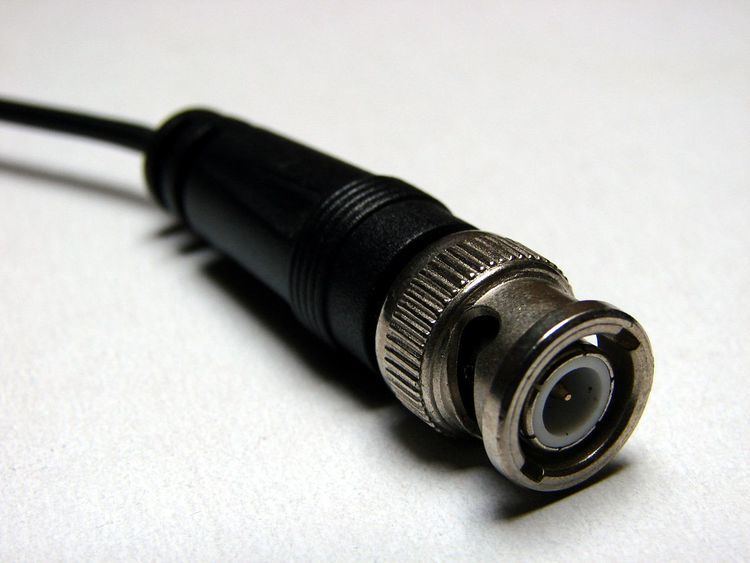 | ||
CoaXPress (CXP) is an asymmetric high speed serial communication standard over coaxial cable. The most common application is to interface cameras to computers (via frame grabbers) on applications (such as machine vision) which involve automated acquisition and analysis of images. A CoaXPress camera can be interfaced to a CoaXPress frame grabber by a single coaxial cable without an external power supply or extra cables for uplink communication to the camera.
Contents
The current version supports bit rates up to 6.25 Gbit/s over a single coaxial cable from camera to frame grabber. A low speed uplink channel, operating at 20.833 Mbit/s from frame grabber to camera can be used for camera control or triggering. A 24 V power supply is also available over the coaxial cable to deliver up to 13 W to the camera. Applications requiring more than a 13 W power supply utilize a separate power supply. For higher bit rates, two or more coaxial cables can be used in parallel.
History
CoaXPress has been developed by 6 companies, of whom Adimec, EqcoLogic and Active Silicon where among the biggest drivers, in 2008 2009. The goal was after the failure of Visilink to develop a successor for the Camera link standard for high-speed and data-rich vision related communication. The standard was first demonstrated in November 2008 at "The Vision" trade-show. After a good reception the standard writing consortium of industrial companies consisting of Adimec, Eqcologic, Active Silicon, AVAL DATA, NED and Components Express was formed early 2009. during the next Vision in 2009 the consortium was awarded the VisionAward for their efforts to further the cause of (machine)vision applications. By this time the JIIA have adopted CoaXPress to mature it to an official standard after which the first draft version 1.0 was presented in December 2010.
Cabling and connectors
The transmission medium for CoaXPress is coaxial cable with a characteristic impedance of 75 Ω. The maximum transmission distance is depending on the bit rate and the quality of the cable. RG11, RG6, RG59 and other cable types can be used. It is also possible to reuse existing coaxial cable when upgrading from an analogue to a digital camera system.
The standard connector for CoaXPress is a 75 Ω BNC connector. A second connector option is the DIN 1.0/2.3 connector. Solutions with a 5W5 connector have also been demonstrated, but this is not officially supported by the CoaXPress consortium.
Variants
CoaXPress is a scalable standard and can be used for connections from 1.25 Gbit/s up to 25 Gbit/s and more.
Low speed uplink
CoaXPress supports a low speed uplink channel from frame grabber to camera. This uplink channel has a fixed bit rate of 20.833 Mbit/s. The uplink channel uses 8b/10b encoding. The uplink can be used for camera control, triggering and firmware updates.
When using the multilane DIN 1.0/2.3 cabling solution an optional high speed uplink can also be used, allowing 6.25 Gbit/s uplink communication to the camera. This can be used for very accurate triggering.
Usage
The most common application is to interface cameras to computers (via a frame grabber) on applications (such as Machine vision) which involve automated acquisition and analysis of images.Some cameras and frame grabbers have been introduced which support and utilize the CoaXPress interface standard.
Implementation
So far, there is just one company, EcqoLogic, which develops CoaXPress compatible driver and equalizer devices. These devices must be used with FPGA devices, in order to implement CoaXPress standard protocol. Such standard implementation is executed using FPGA IP core, specially designed for this protocol, while it takes care of all the features defined by standard. Each side of the vision system, e.g. Camera or frame grabber, requires dedicated FPGA IP core.
